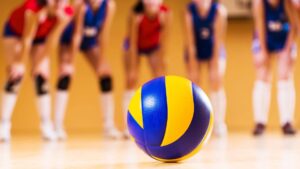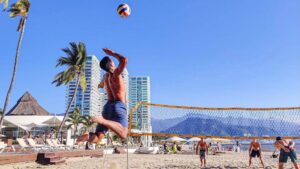Breaking into professional volleyball is a dream for many athletes. Whether your goal is to play in elite international events like the FIVB Volleyball Nations League or join a top-tier club in Europe, qualifying for professional volleyball tournaments requires more than just raw talent. It demands strategic planning, physical preparation, and a deep understanding of how the volleyball ecosystem works.
In this article, we’ll break down everything you need to know to qualify for professional volleyball competitions — from the local level all the way up to the global stage.
Understanding the Volleyball Pathway
Volleyball operates across a layered competitive structure that varies by country, region, and league. To qualify for professional tournaments, athletes typically follow a progressive route that includes:
- Youth and High School Volleyball
- Club and Academy Teams
- College or University Volleyball
- Professional Trials and Contracts
- National Team Selection and International Representation
Each of these levels plays a vital role in your development and visibility as a player. Let’s explore how each step contributes to qualifying for professional tournaments.
Step 1: Excel in Youth and School Programs
The journey often begins in school or community youth leagues. At this stage, foundational skills are developed, including passing, serving, positioning, and teamwork.
How to Stand Out:
- Join school teams or community leagues early.
- Attend skill camps and regional clinics.
- Get noticed by scouts during state and regional championships.
Strong performance here can open the door to club-level volleyball, where the competition intensifies and visibility increases.
Step 2: Compete in Club and Academy Teams
Club volleyball is where players begin to build a serious resume. These teams often participate in nationally and internationally ranked tournaments and are closely watched by college and professional scouts.
Key Strategies:
- Try out for top-level regional or national clubs.
- Travel to compete in sanctioned tournaments (e.g., USA Volleyball, AAU, or JVA events).
- Get professional coaching to refine technique and volleyball IQ.
- Learn to play multiple positions to increase versatility.
Academy teams — especially those affiliated with professional clubs — often have connections with overseas organizations or national federations. Being part of one can give you access to high-performance training and showcase events.
Step 3: Advance Through College or University Programs
For many athletes, college volleyball is the gateway to the professional world. In countries like the United States, the NCAA, NAIA, and NJCAA systems are hotbeds for recruiting professional talent.
Why College Volleyball Matters:
- Provides consistent, high-level competition.
- Exposure through televised matches and national championships.
- Access to certified strength coaches, nutritionists, and sports psychologists.
- Often includes academic support, which is critical for managing dual careers.
Top Tip:
Choose programs with a strong history of sending athletes to pro leagues. Schools in conferences like the Big Ten, Pac-12, and ACC are known for elite volleyball development.
Step 4: Attend Professional Tryouts or Enter the Draft
Once you’ve built a strong record at the collegiate or club level, it’s time to test the waters with professional opportunities.
Pathways to the Pros:
- Open tryouts: Many clubs in Europe, Asia, and South America hold open tryouts annually.
- Drafts: Some leagues, like Korea’s V-League and Japan’s V.League, conduct annual drafts for both domestic and international players.
- Agent representation: A sports agent can negotiate contracts and connect you with clubs abroad.
- Video highlights: A high-quality highlight reel can open doors internationally. Include match footage, not just training.
What Scouts Look For:
- Technical proficiency (serving, blocking, setting, attacking)
- Tactical decision-making and game awareness
- Physical attributes (height, vertical jump, speed)
- Mental toughness and coachability
- Positive attitude, communication, and leadership on the court
Step 5: Get Noticed by National Teams
Qualifying for elite tournaments like the Volleyball Nations League, Olympic Games, or World Championships usually requires national team selection.
How to Enter the Pipeline:
- Attend junior national team camps and open trials.
- Perform well in national-level championships.
- Join recognized training centers run by your national federation.
- Stay consistent in club leagues where national scouts regularly observe.
Each country has its own selection process. Some federations run annual identification camps, while others use performance data and coach recommendations to build their rosters.
Types of Professional Volleyball Tournaments
To better plan your path, it’s helpful to understand the tiers of tournaments and what it takes to qualify.
1. Domestic Pro Leagues
- Italy’s SuperLega (Men)
- Brazil’s Superliga (Men & Women)
- Turkey’s Sultanlar Ligi (Women)
- Japan’s V.League
- USA’s Athletes Unlimited (Women)
Entry Requirements:
- Professional contract with a domestic club.
- Often facilitated through agents or video scouting.
2. Continental Club Competitions
- CEV Champions League (Europe)
- AVC Club Championships (Asia)
- CSV South American Club Championship
Teams qualify through top placement in their domestic leagues.
3. International National Team Tournaments
- FIVB Volleyball Nations League
- Olympic Qualifiers
- World Championships
These require selection to your country’s national team and a track record of success in international play.
4. Beach Volleyball Circuits
- AVP Tour (USA)
- FIVB World Tour
- NORCECA Beach Circuit
- European Beach Volleyball Tour
These typically rely on a point-based ranking system. To qualify:
- Compete in national beach circuits.
- Earn points through consistent high placements.
- Register and maintain active status with FIVB or your regional federation.
Building Your Volleyball Resume
A professional-level resume (or player profile) is essential to getting noticed and signed.
What to Include:
- Full name, nationality, date of birth
- Height, weight, spike/block reach, dominant hand
- Preferred position(s)
- Current and past teams with dates
- Tournament results and awards
- Academic history (especially for college-level athletes)
- Contact information and agent (if applicable)
- Highlight video links (YouTube, Volleybox)
A visually clean, mobile-friendly layout is essential. Use PDFs and link to cloud portfolios or recruiting platforms like BeRecruited or NCSA.
Strength and Conditioning Requirements
To compete at the professional level, athletes must meet high physical standards. Clubs will often conduct physical assessments before finalizing contracts.
Core Physical Metrics:
- Vertical Jump: Men (70–100 cm), Women (50–80 cm)
- Sprint Speed: 10m or 20m sprint timing
- Shoulder Mobility: For spiking and serving endurance
- Leg Power & Core Stability: For injury prevention and explosiveness
Work with volleyball-specific trainers to ensure your conditioning plan includes:
- Plyometric training
- Periodized strength programming
- Mobility and recovery protocols
- Nutrition planning
Mental Preparation and Professionalism
Playing professionally isn’t just about skill — it’s about mental fortitude and discipline.
Attributes That Set You Apart:
- Resilience after losses or poor performances
- Focus during long tournaments and travel schedules
- Adaptability to foreign cultures and new coaching styles
- Positive team presence and leadership
Professionalism Includes:
- Punctuality and communication
- Handling contracts and visas responsibly
- Representing your team and sponsors with integrity
- Maintaining a social media presence that aligns with your brand
Common Challenges and How to Overcome Them
1. Lack of Exposure
- Use platforms like Volleybox.net to showcase your profile.
- Post consistently on Instagram, YouTube, and TikTok.
- Send performance packages to clubs, federations, and agents.
2. Limited Access to Elite Training
- Join remote programs or online coaching platforms.
- Travel to volleyball training camps abroad.
- Apply for scholarships to international academies.
3. Visa, Cultural, and Language Barriers
- Research countries with easier visa pathways for athletes.
- Take language basics classes (Italian, Japanese, Portuguese, etc.).
- Work with clubs that offer support for international players.
4. Financial Obstacles
- Seek local sponsorships from small businesses.
- Apply for sport development grants.
- Use GoFundMe or Patreon to fund travel or training expenses.
Final Thoughts
Qualifying for professional volleyball tournaments is a multi-step journey that rewards dedication, smart choices, and continuous growth. Whether you’re aiming for indoor or beach, domestic or international play, there’s a clear path for those willing to commit.
Build your foundation, stay focused on the long term, and seize every opportunity to showcase your skills — because every elite player started exactly where you are now. With the right preparation, network, and persistence, you can turn your dream into a professional reality.
Remember: your path won’t look exactly like anyone else’s — but every jump serve, every dive, every sacrifice brings you one step closer to the global stage.
Explore More:
- Learn about the Top 10 Volleyball Tournaments Every Fan Should Watch in 2025



